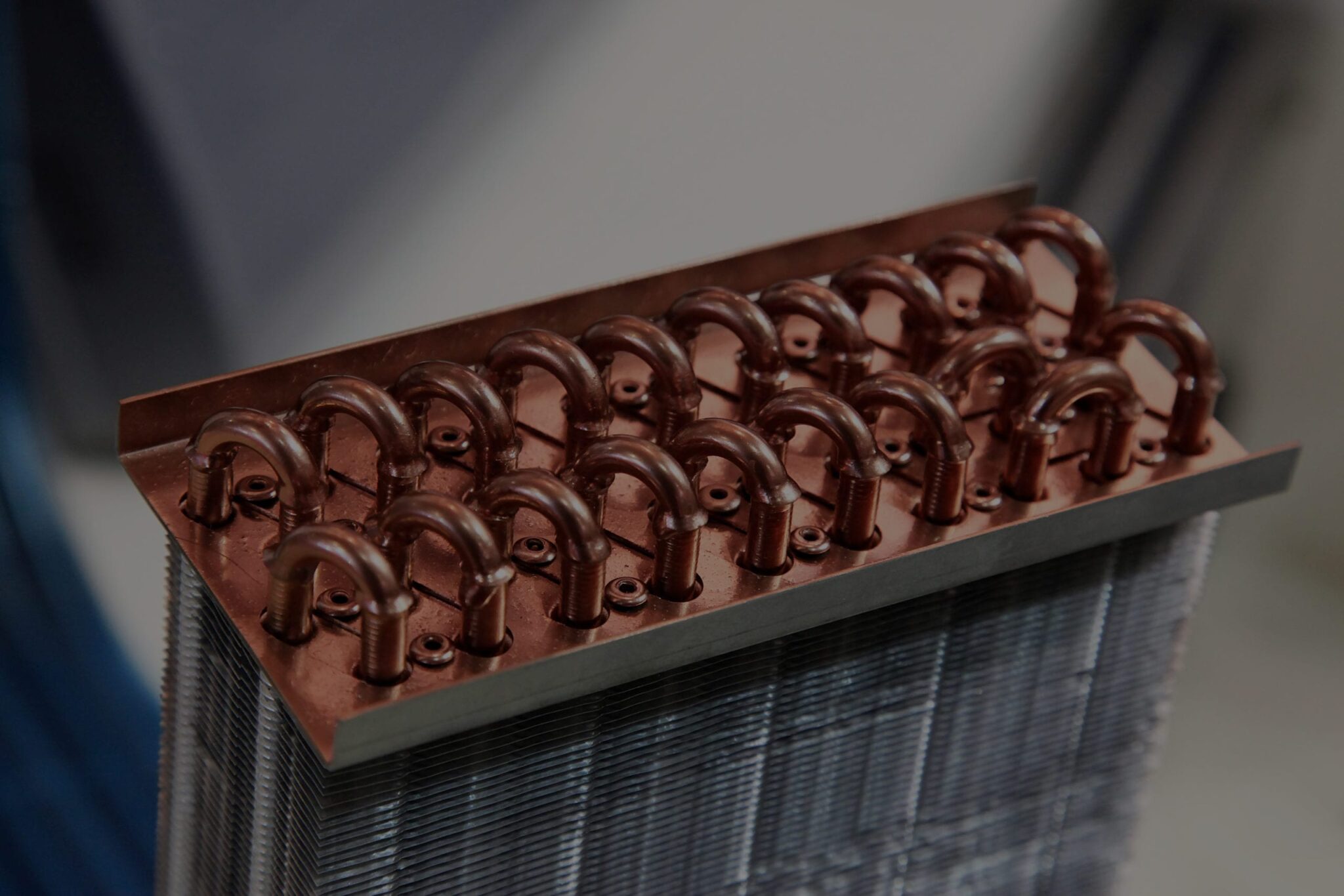

Previously published on fastradius.com on July 8, 2019
Advances in additive manufacturing are suddenly making new part designs possible that we’ve always taken for granted had to be done a certain way. Take the heat exchanger, a common industrial component in machines of all types that’s been around since the industrial revolution.
The essential function of a heat exchanger is to move heat from one place to another, usually by fluid flow (gases or liquids) through a piece of machinery. They’re used in almost every industrial application, residence and anywhere that hot and cold matters: refrigerators, furnaces, AC systems, transport, oil refineries, commercial environments, hospitals and more.
The challenge of making heat exchangers more efficient has long plagued industrial engineers. A typical heat exchanger is made with metal and has a rectangular architecture composed of right angles, straight lines and stacks. These are the types of shapes most easily manufactured using traditional techniques, but they aren’t the best shapes for maximizing heat exchange in a small space.
It turns out there’s a way to make heat exchangers more efficient, lighter and less expensive — and more effective than ever before — using additive manufacturing.
Most people are familiar with what a car radiator looks like: a bank of tubes with a large number of thin metal fins. It’s a large, blocky shape, basically a rectangle. Most engineers will acknowledge that new geometries of heat exchangers would improve performance, but it’s never been possible to achieve them until now.
In most designs, the components of the heat exchanger have relatively simple geometries. Fluid passages are usually straight and smooth. These straight, smooth passages normally have lower heat transfer compared to passages that are twisty and contoured. But unfortunately, twisty and contoured passages cannot be made using traditional manufacturing technologies.
In some of these rectangular designs, a manifold might direct the flow of fluid in the machine, causing it to flow into regions of high temperature or low temperature — the regions that are targeted for heat flow. Typically, these manifolds are made as individual, separate components. When components are made separately and then assembled, there is extra cost and labor associated with assembly and quality checks.
Pictures of fabricated manifold devices. (a) Overall shape of the manifold device. Front views of manifold devices (b) without static mixers and (c) with mixers. (d) Side-view schematic of static mixers with integrated manifold devices.
With additive manufacturing, you can exploit the available “white space” by making heat exchangers in a range of shapes that have an advantage in terms of energy efficiency, system performance and the ability to move larger amounts of heat around using smaller volumes of fluid.
In the study, we picked a common heat-exchanger architecture — a horizontal heated plate with a very simple geometry that water flows over to remove heat. It’s one of the simplest configurations for a heat exchanger. Using additive manufacturing, we created the manifold, the part that controls fluid flow, from additively manufactured polymer. We tested our designs using various technologies and materials. One particularly successful design was made using Carbon Digital Light Synthesis and Cyanate Ester, because that material is so highly heat-resistant. The resulting heat exchanger uses mixing structures that cause a cold fluid to efficiently remove heat from a hot plate.
Rectangular twisted tape mixer made using Carbon Digital Light Synthesis and Cyanate Ester
Polymer has a much lower thermal conductivity than metal, so you wouldn’t use polymer for the component that needs to carry heat. But with additive manufacturing, you can fabricate the mixers directly into the flow channels and then assemble them onto the heated plate. We analyzed two types of mixing structures: twisted tape structures like conventional static mixers and a novel, chevron-shaped offset wing structure.
Images of fabricated devices; (a) rectangular channel with no static mixers (plain channel); (b) rectangular channel twisted tape mixers; and (c) rectangular channel with chevron mixers.
We were able to successfully demonstrate significant improvements in heat exchanger performance, increasing the energy efficiency of products and tools created using additively manufactured designs. Overall, we saw about a 2x improvement of heat-transfer performance in the presence of the mixing structures produced with additive manufacturing. This is a big deal in a system where your goal is to remove as much heat as possible. It’s twice the heat.
In another type of industrial situation, where your goal might be to maximize the heat exchange while minimizing the size of the device — for instance, when designing a performance automobile where the size and weight of the vehicle impacts performance — you could shrink the size of the heat exchanger down to achieve the desired result. Additive manufacturing makes this sort of customization very flexible for application-specific goals.
Taking advantage of these new geometries is going to enable major advances in the manufacture of all types of machinery and appliances. Our research will help put these results in the hands of engineers around the world, who can exploit new techniques that allow for increased heat transfer. It’s very exciting.
Forget typical cycle times. We're pushing the boundaries of conformal cooling. While traditional approaches deliver…
Forget typical cycle times. We're pushing the boundaries of conformal cooling. While traditional approaches deliver…
From left to right: Brayden Janak (apprentice); Logan Vifaquain (CNC machining, Programming and CMM); Ron…
SyBridge Technologies is proud to announce we have been awarded the 2023 General Motors Supplier…
Today, designers and engineers are accustomed to working with digital tools in their day-to-day jobs.…
Optimizing Your Injection Molding Process for Cost-Effective Manufacturing Excellence In today’s competitive landscape, manufacturers are…